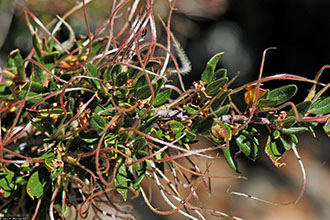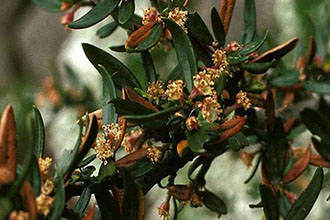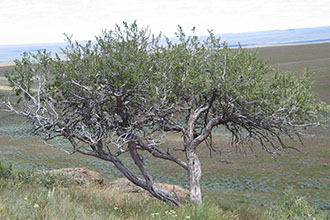Taxonomy: Kingdom - Plantae (plants). Subkingdom - Tracheobionta (vascular plants). Superdivision - Spermatophyta (seed plants). Division - Magnoliophyta (flowering plants). Class - Magnoliopsida. Subclass - Rosidae. Order - Rosales. Family - Rosaceae (rose). Genus - Cercocarpus Kunth. Species - Cercocarpus montanus Raff.
Ecology: True mountain-mahogany is a shrub or less often a small tree 1-7 m tall. Dayton suggests that on "favorable" sites true mountain-mahogany can assume small tree stature. Few to many branches are produced, and the form is erect to spreading. Stems measure 0.5-5 cm in diameter and are sturdy and stiff. The main stem is typically less than 80 cm in diameter. Researchers noted lignotubers on some shrubs in Nuttall's shrub oak-dominated chaparral vegetation in southern California. True mountain-mahogany bark is thin and smooth. True mountain-mahogany is considered long-lived...Deciduous, persistent, "mostly deciduous," and "occasionally evergreen" are all used to describe true mountain-mahogany. Deciduousness is latitude and/or variety dependent. True mountain-mahogany grows best in full sun, tolerates early-seral site conditions, and is dominant in several late-seral or climax communities. For additional information on late-seral or climax communities where true mountain-mahogany is dominant. Following disturbances in areas where true mountain-mahogany is established, colonization by this species is rapid...In southern California's San Sevaine area, true mountain-mahogany occurs in both pioneer and mature alluvial scrub vegetation.



